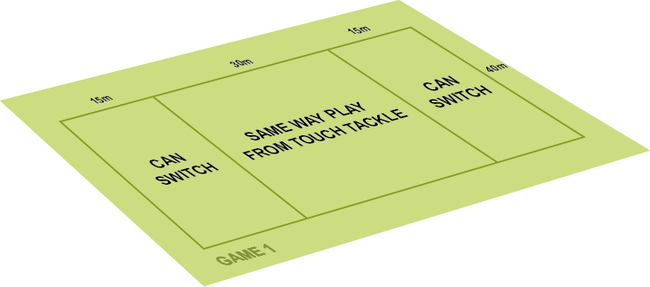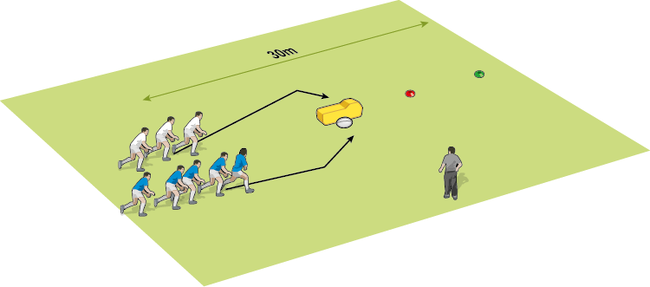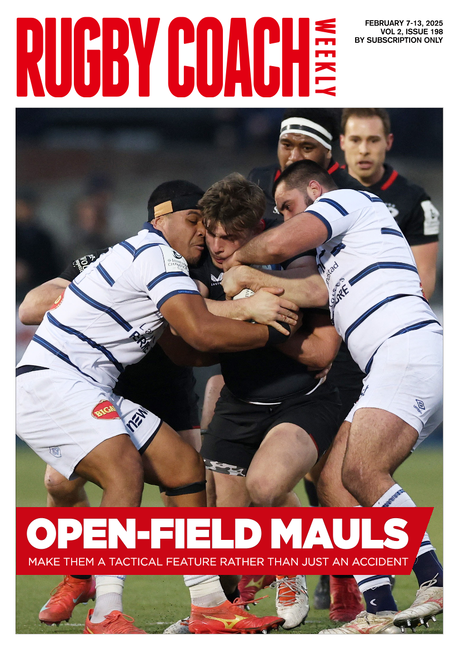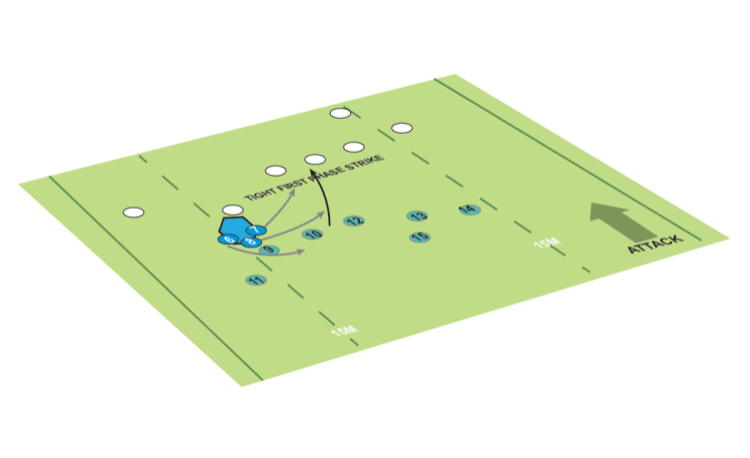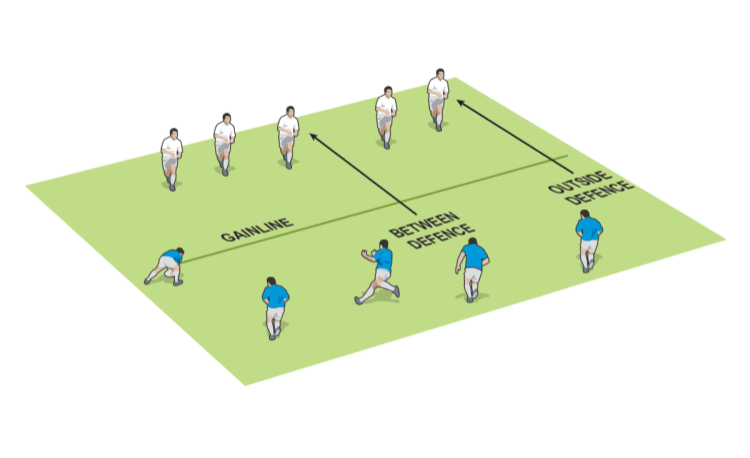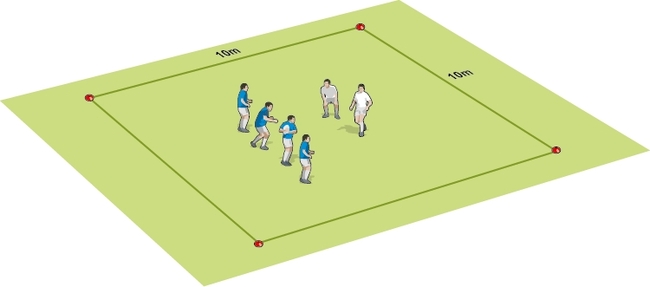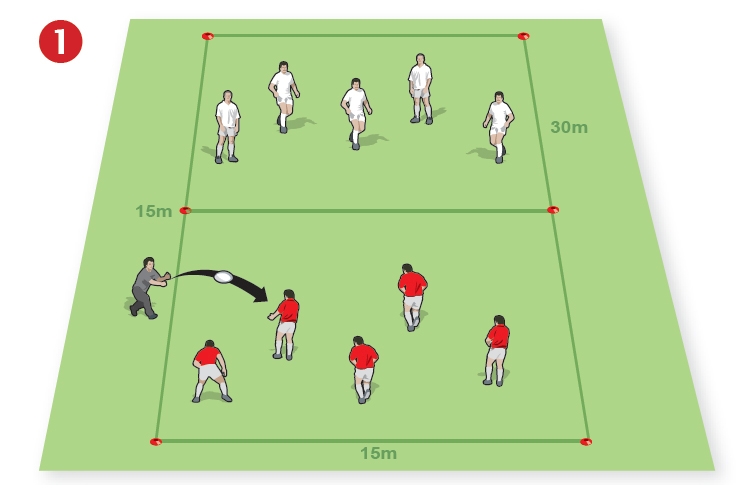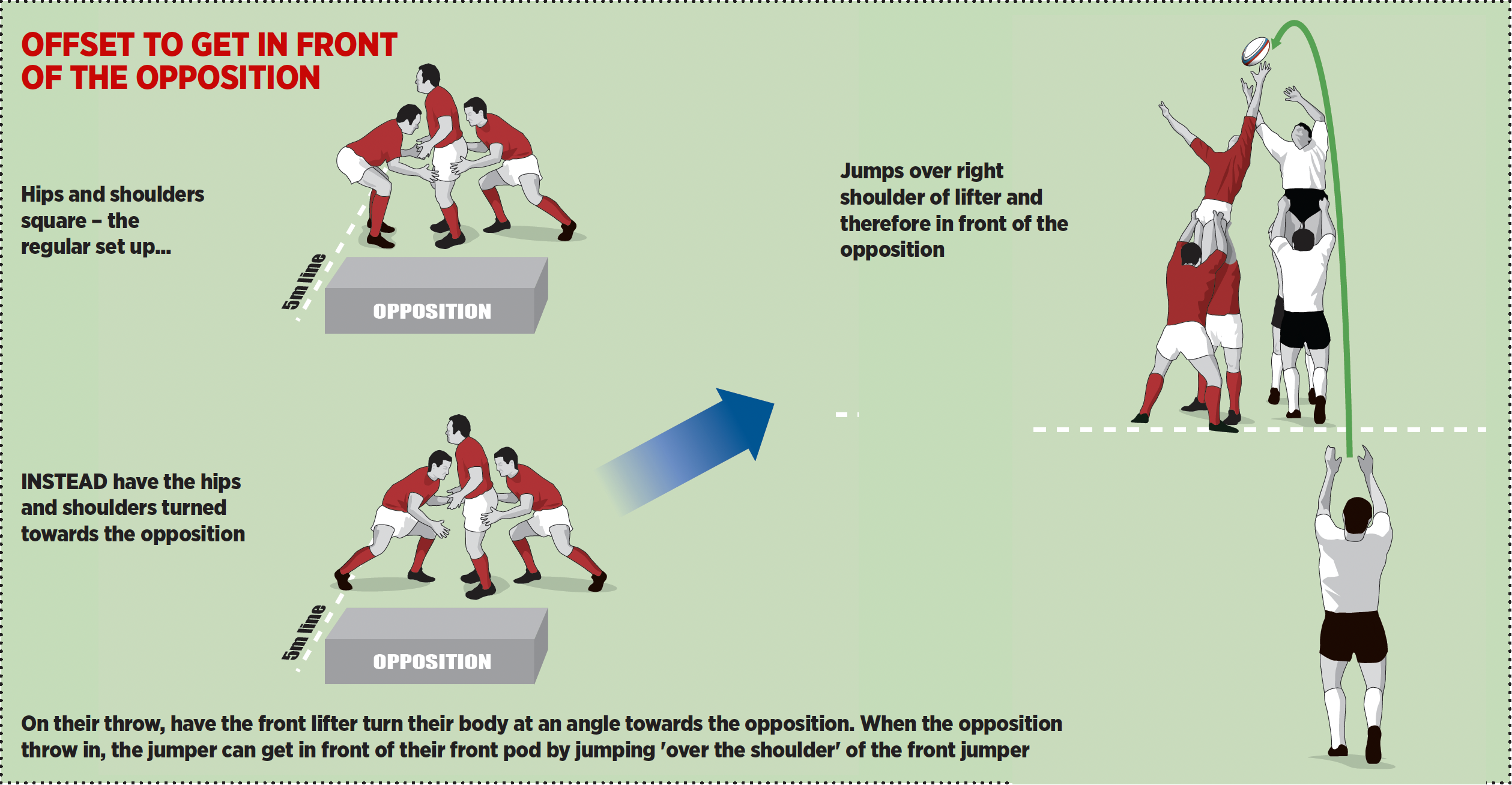Attacking the blindside
A shortside or blindside attack is a powerful play because it can isolate defenders while involving fewer passes. How does this work, and how can you train for it?

A shortside or blindside attack is a powerful play because it can isolate defenders while involving fewer passes. How does this work, and how can you train for it?
The “blindside” is a jargon term. Wherever you have a ruck, maul or scrum, the field is split into two along its width. The side with more space is the open side, and the side with less space is the blindside or short side.
Defences need more defenders for the open side and fewer for the blindside. If they get the balance of defenders wrong, the team in possession should attack the imbalance.
A blindside attack can be more potent because it involves fewer passes. This has three benefits.
- Every pass means more risk.
- Any pass that is backwards means the attack is further back from the gain line (the line across the field from where the ball first started).
- Every pass slows down the attack, if only momentarily, because the ball is moving sideways and not forwards.
Also, think of it this way. In training, can your players execute more 2 v 1s than 4 v 3s successfully? Or even 3 v 2s than 5 v 3s? You know it’s less than you want. In other words, fewer decisions mean more chance of success.
That’s why teams seek to “create a blindside” to attack. The defensive team don’t always leave players on the blindside because they are naturally drawn to protecting more open spaces. Also, slower players tend to be left behind on the blindside.
All this works if the attacking team can recycle the ball quickly, realign quickly, pass accurately and attack straight. Those four skills are sessions in themselves. But I think that you can put them altogether in one session so the players realise how interconnected they are. In the sessions, Scan for blindside attacks and Game: Switch or attack the same way I set out two game-based activities. The first is a pure scenario, and the second is a game.
What’s required from you is patience! The players won’t perform the skills at the required accuracy straightaway.
However, the process of playing through these scenarios and games will highlight where they need to improve. They will aim to combine realignment, running straight and passing fast rather practising them in isolation. That’s tough, yet a far more powerful learning process in the long run.
You will see that I’ve taken one skill away in these sessions. To create some flow, I’ve taken out “recycling”. In a training context, this is most physical aspect. You should balance how much bone-on-bone training you do.
Plus, the motivation to drive into the ruck area in training isn’t quite the same as match days. To keep your players fit and allow the sessions to move along, I would leave out in this aspect.
Newsletter Sign Up
Coaches Testimonials

Gerald Kearney, Downtown Las Vegas Soccer Club

Paul Butler, Florida, USA

Rick Shields, Springboro, USA

Tony Green, Pierrefonds Titans, Quebec, Canada
Subscribe Today
Be a more effective, more successful rugby coach
In a recent survey 89% of subscribers said Rugby Coach Weekly makes them more confident, 91% said Rugby Coach Weekly makes them a more effective coach and 93% said Rugby Coach Weekly makes them more inspired.
Get Weekly Inspiration
All the latest techniques and approaches
Rugby Coach Weekly offers proven and easy to use rugby drills, coaching sessions, practice plans, small-sided games, warm-ups, training tips and advice.
We've been at the cutting edge of rugby coaching since we launched in 2005, creating resources for the grassroots youth coach, following best practice from around the world and insights from the professional game.
